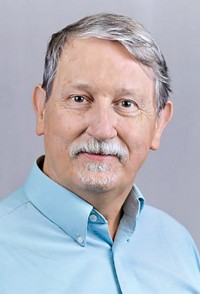Advertisement
Grab your lab coat. Let's get started
Welcome!
Welcome!
Create an account below to get 6 C&EN articles per month, receive newsletters and more - all free.
It seems this is your first time logging in online. Please enter the following information to continue.
As an ACS member you automatically get access to this site. All we need is few more details to create your reading experience.
Not you? Sign in with a different account.
Not you? Sign in with a different account.
ERROR 1
ERROR 1
ERROR 2
ERROR 2
ERROR 2
ERROR 2
ERROR 2
Password and Confirm password must match.
If you have an ACS member number, please enter it here so we can link this account to your membership. (optional)
ERROR 2
ACS values your privacy. By submitting your information, you are gaining access to C&EN and subscribing to our weekly newsletter. We use the information you provide to make your reading experience better, and we will never sell your data to third party members.
Safety
Food For Thought On Chemical Safety
Veteran inorganic chemist argues that the ‘culture’ of laboratory safety must not be compromised
by Jean’ne M. Shreeve
November 2, 2015
| A version of this story appeared in
Volume 93, Issue 43
In the latter half of the 1970s, the late chemistry professor Malcolm M. Renfrew of the University of Idaho and DuPont Teflon development fame edited a column in the Journal of Chemical Education called “Safety in the Chemical Laboratory.” This feature included cogent articles by chemists who were skilled in addressing problems associated with safety issues. The National Research Council’s “Prudent Practices in the Laboratory” was the standard guidebook, a role it still has today.
Because of Renfrew’s time at DuPont, he was thoroughly trained in the art of correct safety practices in the laboratory. The skills he brought with him to the University of Idaho were critical in developing and sustaining a strong, positive safety culture. In the ensuing years, a so-called culture of safety consciousness, accountability, organization, and education has developed in industrial, governmental, and academic laboratories. Yet a recent string of high-profile accidents, some of them including the deaths of researchers, seems to signal that this culture of safety is becoming lost.
Although encouraging a constructive safety culture in a research laboratory will decrease the risk of serious accidents and happenings, it will not prevent these events entirely. The goal of research is to explore the unknown and the unfamiliar. Research, often carried out by the uninitiated, requires investigation of the new and exciting and unpredictable. It simply is not possible, nor desirable, to remove all risks and all contacts with the unknown; if for no other reason, all the fun of chemistry would disappear.
More Reading:
“Safe Science: Promoting a Culture of Safety in Academic Chemical Research.” National Research Council (2014).
“Prudent Practices in the Laboratory: Handling and Management of Chemical Hazards.” National Research Council (2011).
“Identifying and Evaluating Hazards in Research Laboratories.” ACS Committee on Chemical Safety (2015).
As someone who has many years of experience working with some of the most reactive and hazardous chemicals known, and who has prepared dangerous molecules, including energetic materials such as propellants and explosives, I have found that pursuing new research safely is at least as important as pursuing new research.
It is impossible to completely eliminate our innate sense that an unfortunate incident could never happen to us—we are all prone to mishaps. But for some reason in our minds we are impervious to harm or accident while working in the lab. Although with experience and maturity we become more cautious, this sense of invincibility never disappears completely.
Building and maintaining a strong, positive safety culture in a department, and particularly within a research group, encourages all laboratory workers to place the highest priority on best practices and to raise concerns to all when potential safety problems are not controlled. The head of the lab must play the most significant role in establishing acceptable operating procedures and enforcing them. This culture must be endemic to the research group and not be observed solely to be compliant with the demands of any higher authority.
Jean’ne M. Shreeve is a University Distinguished Professor at the University of Idaho with a 50-year career exploring fluorine chemistry and developing energetic materials. She has served on ACS and national committees and coauthored reports and articles on chemical safety.

Jean’ne M. Shreeve is a University Distinguished Professor at the University of Idaho with a 50-year career exploring fluorine chemistry and developing energetic materials. She has served on ACS and national committees and coauthored reports and articles on chemical safety.
Of course, lab members cannot have had all possible chemical experiences with every possible substance in every possible combination or circumstance. But organizations can establish the necessary guidelines required to operate safely, and researchers can carry out their work with a minimum of danger and, most of all, always based on good common sense.
My experience has been that university research laboratories function extremely well using a buddy system. Every individual has a designated person in the group with whom to discuss all pending reactions with respect to the safe handling of chemicals and equipment, the safety of the reaction and conditions proposed, the quantities of the materials to be used, and the safety protection required. Discussion should continue as reaction progress continues.
Engaging in best safety practices must be an ongoing process, integrated into the daily activities of laboratory personnel. Unhappily, chemistry faculty members today are not often aware of what constitutes good safety practices. It is a skill that is being lost as many knowledgeable chemists leave research labs for other opportunities or retire. And new faculty members under today’s pressures vary widely in their degree of commitment to maintaining their safety skills and helping improve departmental safety.
It has been said that the greatest hazard in an industrial laboratory is a fresh chemistry Ph.D. graduate. But our up-and-coming chemists are not our only concern. It is similarly argued that the greatest hazard in a university laboratory is a tenured faculty member who has never been involved in a serious accident. Some of the recent high-profile accidents attest to both of those maxims.
The lack of a shared enthusiasm can limit the effectiveness of our safety programs. The concept of a “culture” of safety must survive and must be adopted by all who are involved in ensuring the safety of chemistry laboratories and in guiding our coworkers to safer and more fulfilling lives.
What does your lab or department do to ensure chemical safety? Share your best practices in the comments below.
Views expressed on this page are those of the author and not necessarily those of ACS.




Join the conversation
Contact the reporter
Submit a Letter to the Editor for publication
Engage with us on Twitter